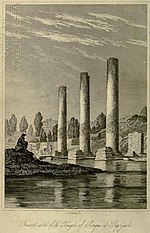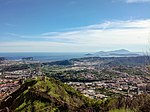Rione Terra
Pozzuoli

Rione Terra is a historic quarter in Pozzuoli, Italy, in the Phlegraean Fields region west of Naples. The ancient fortress originally served as the acropolis for the Greek settlement of Dicearkia before being integrated as the Roman port city of Puteoli. The densely built-up district is located on a small tufa promontory overlooking the Gulf of Pozzuoli and today serves as a tourist attraction.
Excerpt from the Wikipedia article Rione Terra (License: CC BY-SA 3.0, Authors, Images).Rione Terra
Via Gabella Portese,
Geographical coordinates (GPS) Address External links Nearby Places Show on map
Geographical coordinates (GPS)
| Latitude | Longitude |
|---|---|
| N 40.821111111111 ° | E 14.12 ° |
Address
Rione Terra
Via Gabella Portese
80078 , Rione Ortodonico
Campania, Italy
Open on Google Maps








